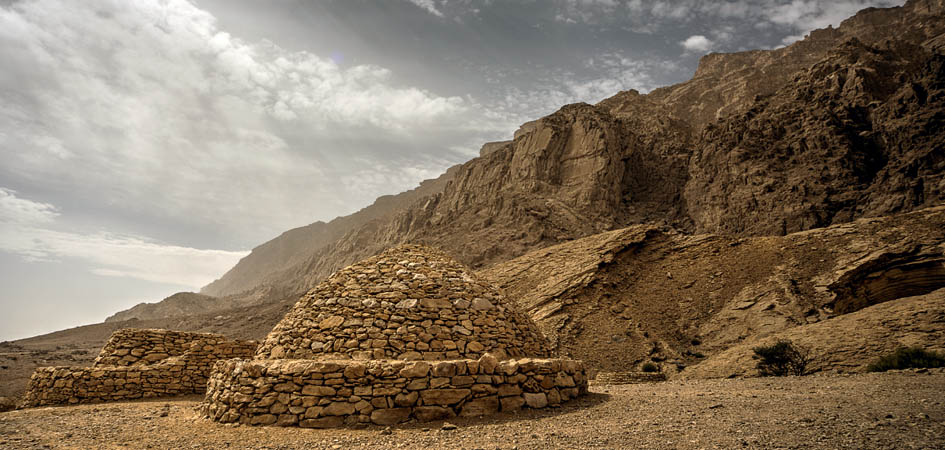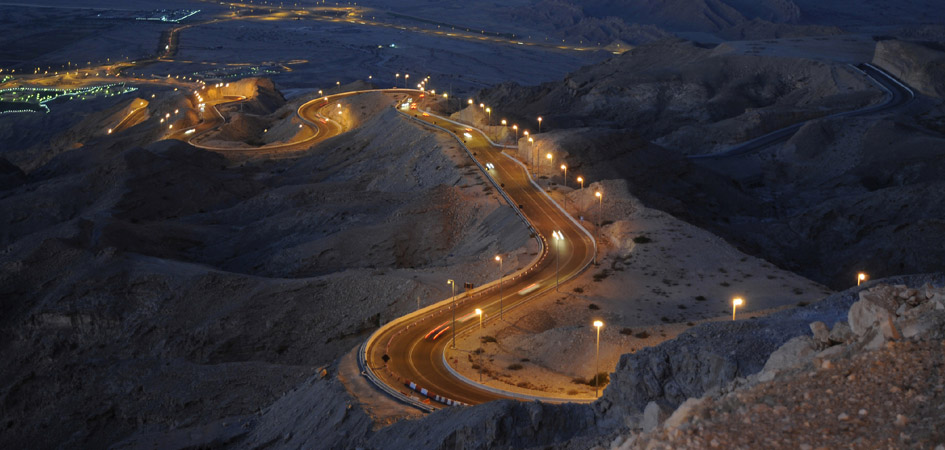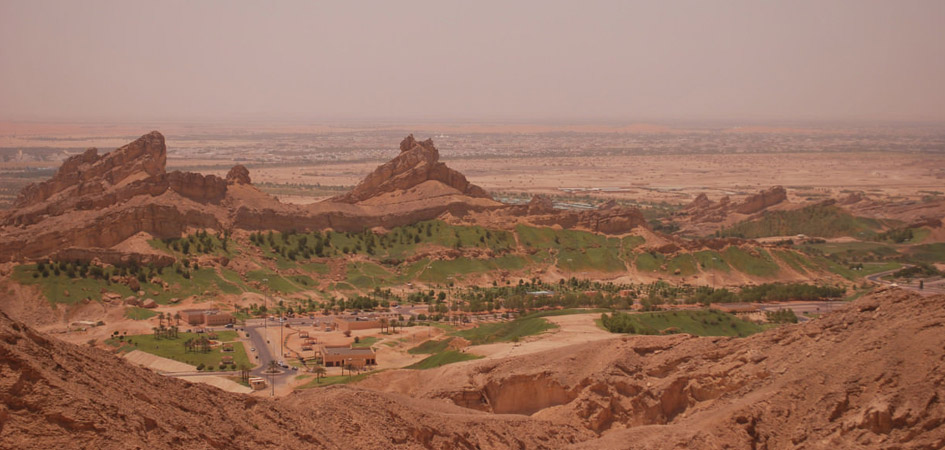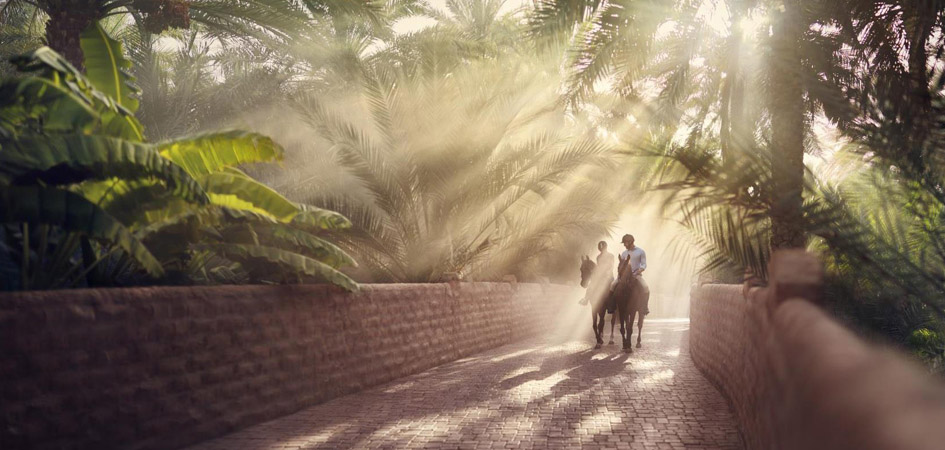Al Ain was home to the late Sheikh Zayed, the former ruler of Abu Dhabi. Its geography differs greatly from Abu Dhabi’s, as Al Ain is much greener. Our subject matter for this blog, Jebel Hafeet, lies on the outskirts of the Al Ain district, which is the southeastern side of it, to be exact.
Jebel Hafeet means, as it looks, ‘The Barren Mountain.’ This mountain is protected under the Environmental Protection Act, introduced in 2018.
Jebel Hafeet Mountain Al Ain
Jebel Hafeet is the third-highest peak in the UAE and home to some of the country’s most beautiful roads. Its summit is 1200 meters (4000 feet) above sea level.
The Jebel Hafeet forms part of the Hajar mountains, a significant portion of which lies in Oman. This mountain range is the reason for Oman’s vastly different climate from the UAE’s.
The region is divided between Oman and the UAE, but the highest portion of the mountain is in Abu Dhabi.
You will get the full view of Al Ain, a city sprawling beneath it from the top of the mountain. Tourists and motorheads have romanticized the winding road for many decades. Before building this two-lane highway on the hill, nothing existed more than just a mountain trail.
On top of the Jabel Hafeet mountain with a vast parking lot, you can see the mighty mountain outline on the horizon from anywhere when you are in Al Ain.
Since 2018, barbecuing in the mountain area has been illegal due to littering risks. Sad news for campers, but there are particular spots for barbecuing in Jebel Hafeet Park.
Jebel Hafeet Tombs Al Ain
The oldest archeological site in Abu Dhabi is on the mountain’s eastern side. There are several ancient burial sites of the people who are believed to have inhabited the oasis. These tombs were built 5000 years ago, at the beginning of the Bronze Age. The artifacts from here prove the trade links with Mesopotamia and India.

The tombs’ unique hexagonal shape has given them the name ‘beehive tombs.’ The copper and ceramic vessels found on the site helped determine the age of their settlement. After this archeological site, the UAE’s bronze age is called the ‘Hafeet age.’
A team of Danish archeologists first discovered these tombs. After the initial discovery, many more experts came to study the site from different parts of the world. Today, Jebel Hafeet tombs are one of the most visited tourist places in Al Ain.
Jebel Hafeet Mountain Roads
The mountain road is 11.2 kilometers long and climbs with several turns and twists—a total of 60 of them. Driving on Jabal Hafeet Road itself is fun. However, because of its steep gradient and hairpin turns, it is also among the most challenging roads globally.

There are some viewpoints along the way. You can take breaks and have snacks from the cafes in those areas. This road is a favorite destination for cyclists. When it’s winter, you will see a lot of cyclists peddling their way up the mountain.
If you are in the UAE, a drive along the mountain road is worth experiencing. Apart from the fun of driving, the view of Al Ain is also spectacular.
Jebel Hafeet location
It is nearly two hours away from Dubai by road and almost a similar distance from Abu Dhabi city as well. You may book a guided Abu Dhabi City Tour to explore the city from your hotel.
Weather in Jebel Hafeet
The weather here is much cooler than in the rest of the country. Even during the summer, when parts of Dubai are sweltering above forty degrees, the temperature in Jebel Hafeet is less than forty. That’s not a comfy temperature, but it’s much less than in other parts of the UAE.
Winter is the best time to enjoy Jebel Jafeet’s beauty. The temperature is low, and the weather can be hazy at times.
Attraction near Jebel Hafeet – Green Mubazzarah
The greenest place in the UAE is located right next to Jebel Ali. Al Ain Oasis is home to a spectacular geographic feature. Tall, arid, craggy mountains surround its lush green vegetation and farmlands.

The whole area has a rustic appeal. A large Green Mubazzarah park (also called Jebel Hafeet Par) is perfect for picnicking after a drive through the mountains. Although BBQs are not allowed in the park, they are allowed in the surrounding area.
The hot spring gushes forth from the Jebel Hafeet channels through Green Mubazzarah. This spring is responsible for the region’s vegetation to a large extent. Unlike the usual streams from mountains, the water in a hot spring will be hot. In some places, you can see the water steaming.
Al Ain Zoo
It is ten kilometers north of Green Mubazzarah. Al Ain Zoo is quite old—in fact, older than the UAE itself. The then ruler, Sheikh Zayed, founded it and undertook numerous wildlife protection projects in Abu Dhabi in 1968.
The zoo is large. It covers an area of 400 hectares and houses over 4000 animals of 200 species. Different habitats have been recreated for the comfort and health of animals not native to the desert climate. These artificial habitats are:
- Big Cat Oasis
- Hippo and Crocodile Exhibit
- African Habitat
- Bird House
- Asian Habitat
- Sahara Habitat
- Arabian Habitat
Al Ain Zoo is a must-visit if you are here with children.
Al Ain Oasis
It is the first UNESCO heritage site in the UAE. What sets it apart from other heritage sites in Abu Dhabi and Dubai is that, unlike them, the Al Ain oasis is not a modern construction that emulates the heritage style.

This part of Al Ain did not undergo modernization, so much of it was preserved in the modern era. Al Ain Oasis is a date palm plantation fenced using baked clay walls. The traditional Falaj irrigation system, which has been used in this land for over 3000 years, is still being used here.
Al Ain Oasis is a different world, replete with numerous water sources burbling through the Falaj ducts. This 12,000-hectare oasis has hundreds of thousands of date palms growing in well-manicured gardens. There is also an eco-center that curates the oasis’s history for visitors.

Al Ain Museum
If you have wondered where all the artifacts excavated near the beehive tombs are kept, here is the answer. The Al Ain Museum curates the history of Al Ain from the Bronze Age to the 20th century, an incredible 7,500-year history.
This one also was founded by Sheikh Zayed in 1969. Before shifting to the purpose-built facility in 1971, the museum operated inside the Eastern Fort.
Mercure Jebel Hafeet Hotel
This luxury resort hotel is perched on top of Jebel Hafeet. Not at the very top, but a little above 900 meters. This one is exceptional because it is the only hotel on top of Jebel Hafeet. All the others you will find are in the valley of it.

This hotel lets you enjoy the view of the valley from the comfort of the hotel. There are three rooftop swimming pools with a great idea. This should be your primary choice for a hotel stay near Jebel Hafeet.

